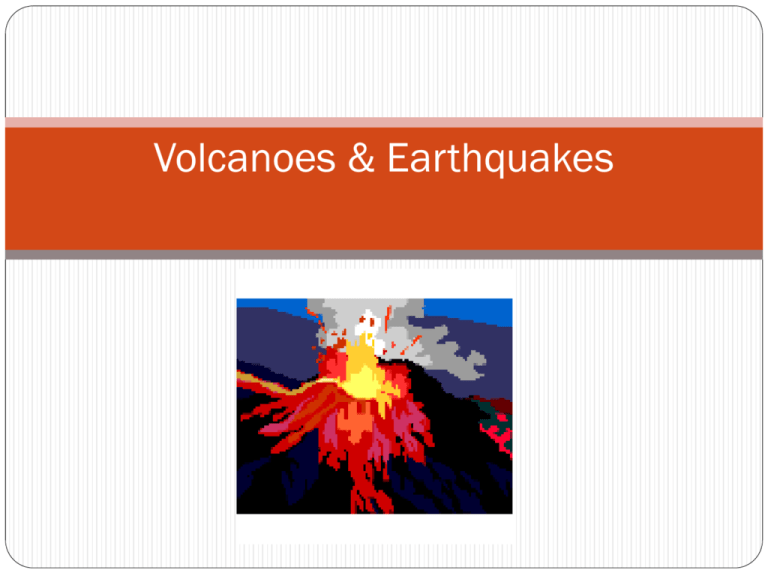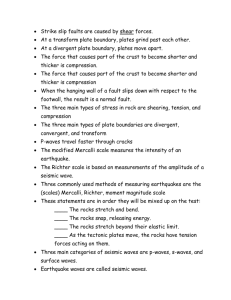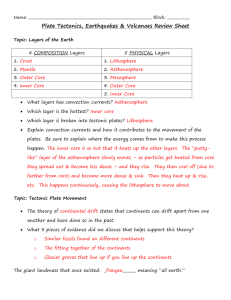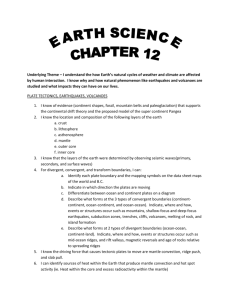Volcanoes & Earthquakes - CFAS
advertisement

Volcanoes & Earthquakes Earthquakes Wegener’s Pangaea Wegener’s observations about how continents seem to fit together was the beginning of the Theory of Plate Tectonics. Animation of the movement of tectonic plates. Continental Shapes Activity Use scissors to cut out each continent(Africa, Antarctica, Australia, Eurasia, North America, and South America). Move the continents like a jigsaw puzzle to see how the pieces best fit together. Tape your version of Pangaea together on a white sheet of paper and name your “super continent”. Which continents do you recognize? Pangaea Remember: The tectonic plates are not “floating” on molten rock but are all in contact with each other. Where Plates Meet Activity Using soda crackers and molasses model the movements of the Earth’s crust. Are the tectonic plates shaped like the soda crackers? Question: What determines the shapes of the tectonic shapes? Answer: The shapes of tectonic plates are determined by earthquakes and volcanoes. The edges of the soda crackers we used in out activity got “messy” just as the edges of tectonic plates get “messy” from earthquakes and volcanoes. Did you notice how some molasses oozed up through the holes in the crackers? The same thing happens to the Earth’s crust where there is a thin or weak spot. Question: Why isn’t it likely that we would have a major earthquake in New Brunswick? Could we have an earthquake in NB? Why? Plate Movement News Quake stretched New Zealand toward Australia The making of mountains. The making of Mt. Everest Bill Nye – Earthquake Mountain Formation Activity Types of Earthquake Waves Use pages 317 - 318 in the text book to draw, colour, and label the three types of earthquake waves. Primary or P Waves are like the compression of a slinky. They are the fastest of the waves and travel through solids, liquids and gases. These waves act as a warning for other more powerful waves. Secondary or S Waves like a side-to-side motion of a slinky. These waves are slower then the P Waves and only travel through solids. Surface Waves Surface Waves are like ripples in a pond. These are the slowest of the waves but tend to cause the most damage. Scientists have two names for the source of an earthquake. The Focus is the point of origin below the surface where P and S Waves come from. The Epicentre is found on the surface, surface waves come from this point. Ground Movements Earthquakes can be identified as three basic types: Type 1: Convergent (push together) Type 2: Divergent (pull apart) Type 3: Transform (slide past one another) The San Andreas Fault is a well-known fault found in California. A fault is the area where rocks break and move. What is liquefaction? Tsunamis from underwater earthquakes Tsunamis 2









